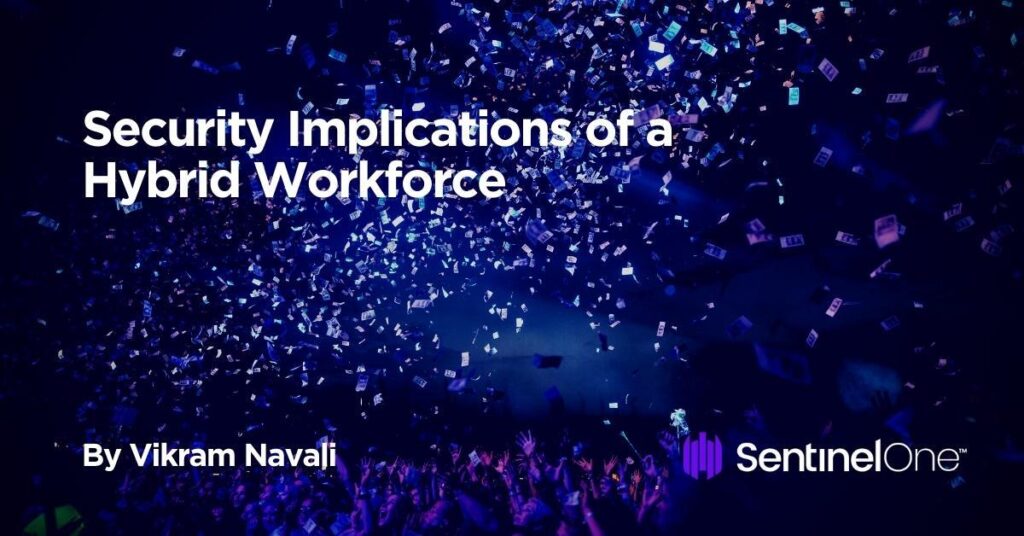The hybrid workforce is gaining momentum in the wake of the COVID-19 pandemic. A hybrid workforce model allows organizations to take advantage of remote working with the collaboration opportunities of in-person working from the office. Organizations are evaluating hybrid workforce models to continue their business operations and employee engagement.
Technology plays a greater role in supporting the hybrid workplace model. According to a Fortune survey, more than 63% of high-growth companies have hybrid work models, and 40% are spending more on IT infrastructure and platforms. Organizations should consider implementing a new set of security strategies to safeguard remote employees, secure their sensitive data and protect against cyberthreats.

Challenges to Staying on Top of Cybersecurity
There are some significant security challenges during these pandemic days that organizations should tackle to make their strategy successful.
Organizations support a hybrid workforce model to ensure their employees have secure and seamless access to corporate data. The pandemic also increased the growth in cloud adoption, where people can access corporate applications, workloads, and data outside the office.
Security professionals are facing more challenges in terms of gaining visibility to user identities and exposures. According to a Gartner study, by 2023, 75% of security failures will result from inadequate management of identities, access, and privileges, up from 50% in 2020
We offer Identity Threat Detection and Response solutions that help organizations implement identity-first security. The solutions provide exposure visibility, reduce the addressable attack surface, and prevent and detect cyber-attacks.
Protecting Remote Workforce Targeting VPN Infrastructure
Implementing hybrid workforce models requires new security architecture strategies. For example, remote access Virtual Private Network(VPN) is one technology many businesses relied on during the pandemic. However, VPNs alone do not protect against every threat. Attackers can gain unauthorized access via VPN. They can compromise VPN accounts and perform reconnaissance to gain further access to internal domain accounts.
Our solutions help organizations detect cyber-attacks attempting reconnaissance within the VPN subnet, which can deploy deceptive credentials and VPN concentrator decoys to detect attacks targeting the VPN infrastructure. These decoys engage the attacker while providing high-fidelity alerts and recordings of their activity for faster investigation and response.
Preventing Access to the Corporate Data
Another critical aspect of the hybrid workforce model is protecting access to corporate data. With the growing adoption of cloud services such as Salesforce, enterprises must allow only authorized access to avoid a security breach. Major cloud service providers like AWS, Azure, and Google Cloud offer native Identity and Access Management (IAM) capabilities. They provide enough functionality to control unauthorized access in their respective cloud environments. However, they cannot fully address more challenging, complex areas of IAM and Privileged Access Management (PAM) in hybrid working environments.
SingularityTM Identity prevents attackers from accessing critical data, exploiting local files, accounts, and storage locations. The solution hides and denies unauthorized access to local files, folders, removable storage, network or cloud shares, local administrator accounts, and application credentials.
Need for the Extra Layer of Security
Organizations should implement new policies to safeguard corporate data no matter where employees are working. Attack surfaces have expanded dramatically during the pandemic, with the shift toward remote work putting identity at the forefront of security. Organizations must now defend identities across the entire enterprise with identity-based, least-privilege access programs and defenses capable of detecting attack escalation and lateral movement on-premises and in the cloud.
Our ITDR solutions offer identity-first security to detect cyber-attacks targeting organizations adopting a hybrid workforce model.
